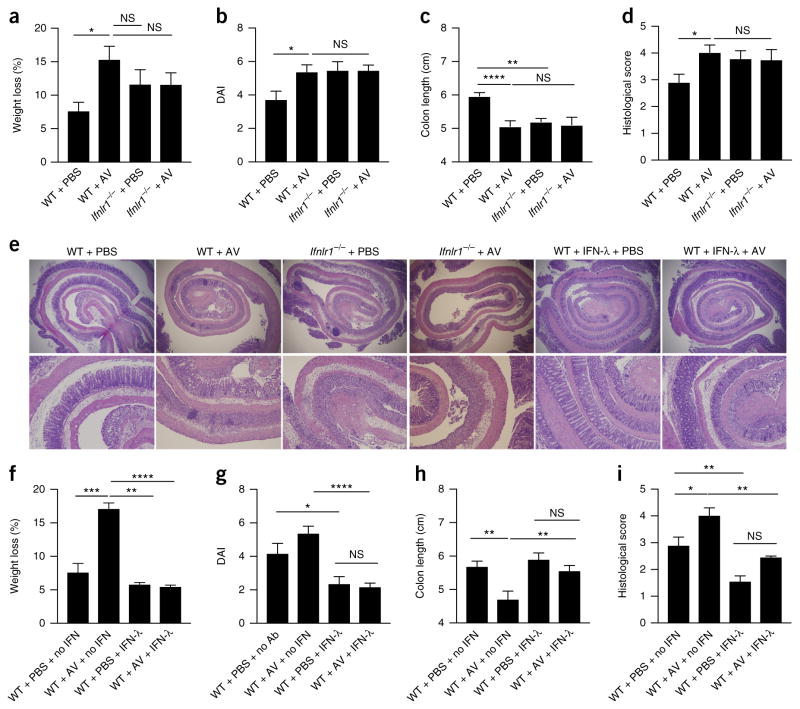Figure 7.
Enteric-virus-induced IFN-λ protects mice from DSS-induced colitis by diminishing oxidative stress. (a–e) Disease progression in wild-type and IFNLR1-deficient mice treated intragastrically with an AV drug ‘cocktail’ (+ AV) or PBS (control) for 10 d before the administration of 2.5% DSS in the drinking water, evaluated as weight loss (a), disease activity index (b), colon length (c), histopathological score (d) and histology (e). (f–i) Disease progression in wild-type mice treated with AV drugs or PBS, plus DSS (as in a), and given intraperitoneal injection of PBS (+ no IFN) or mouse recombinant IFN-λ to which polyethylene glycol was attached (+ IFN-λ; 4 mg per kg body weight) for 7 d, evaluated by histology (e), weight loss (f), disease activity index (g), colon length (h) and histopathological score (i). Original magnification (e), ×4 (top row) or ×10 (bottom row). *P < 0.05, **P < 0.01 and ***P < 0.001 (two-way ANOVA). Data are from one experiment representative of three independent experiments (mean + s.e.m. of eight mice per group in a–d,f–i).

